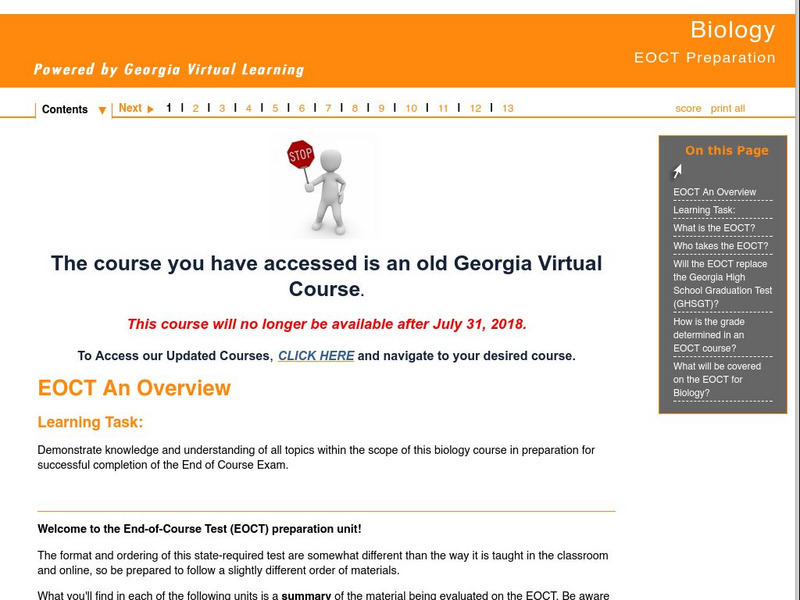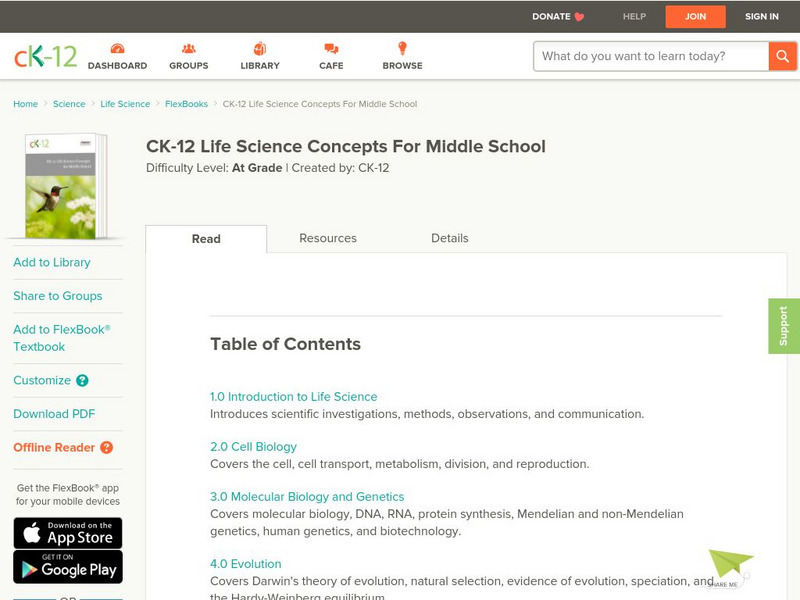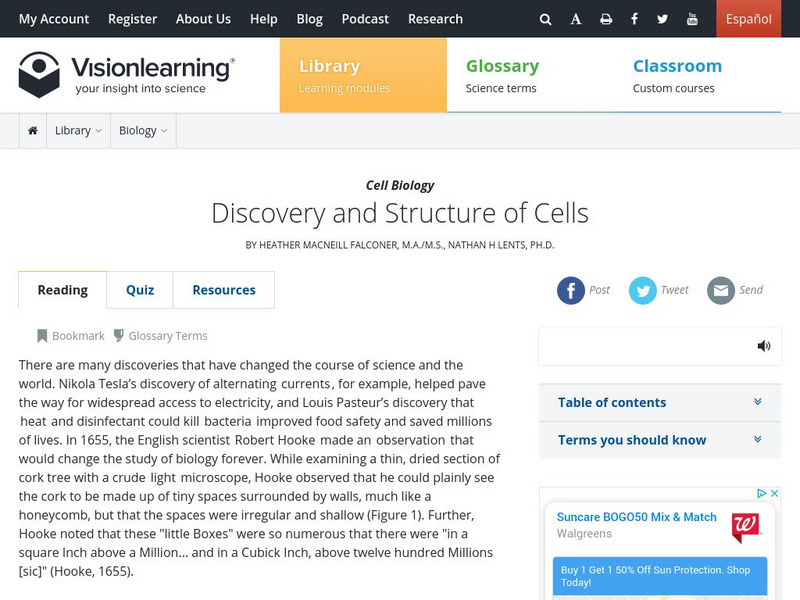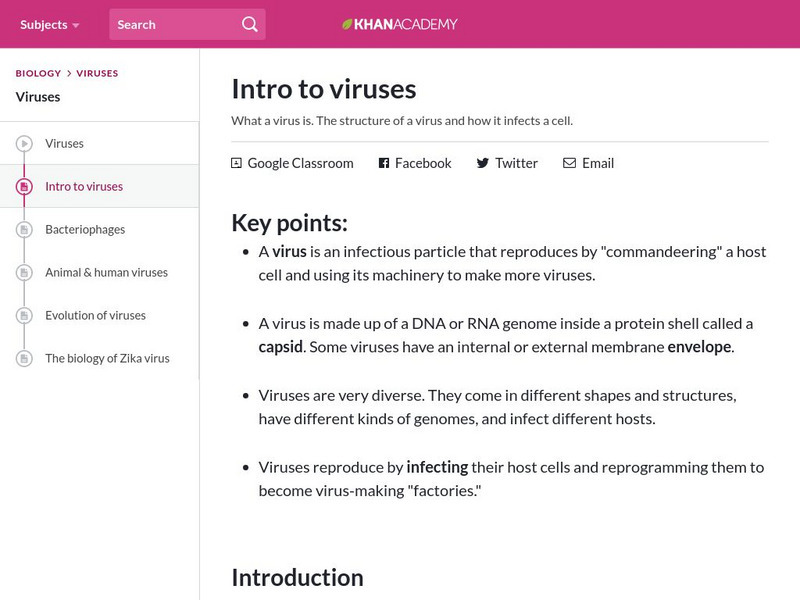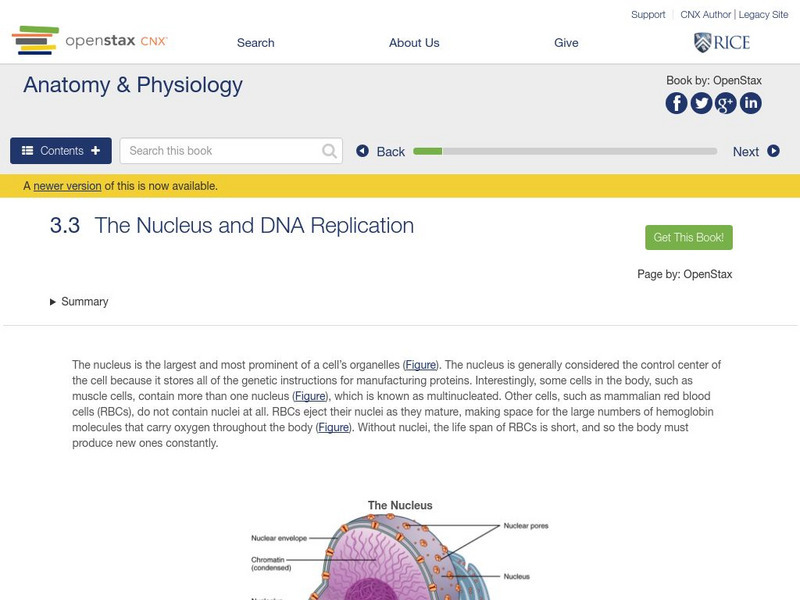Curated OER
Cell Theory, Plant And Animal Cell Comparison
Tenth graders study plant and animal cells. In this investigative lesson students draw their own animal cells and label them.
Curated OER
Biology Word Search A
In this biology worksheet, 9th graders identify and locate various vocabulary terms found in the study of living things. There are 31 biology terms located in the word search.
Curated OER
Introduction to Biology
For this biology worksheet, 9th graders identify and locate various vocabulary terms related to an introduction to the study of biology. There are 19 biology terms located in the word search.
Curated OER
Matching Worksheet: Life Science
In this matching worksheet, students match fifteen words to their definition. They identify words dealing life science such as cell, cell membrane, producer, and antibodies.
Curated OER
The Giant Cell
After actively participating in a unit on cells, the students act out and become the organelles. They will act out and explain the functions of what each of the organelles do for the cell.
Curated OER
The Inside Story- Cells, Organs, and Systems of the Human Body
Fourth graders study the human body from cell level to the inter-relationships of the systems in this unit. Students practice study skills throughout the unit.
Georgia Department of Education
Ga Virtual Learning: Biology: Cell Energetics
An interactive module where students describe, compare, contrast and explain the relationship between photosynthesis and cellular respiration.
Georgia Department of Education
Ga Virtual Learning: Biology: Eoct Preparation
Students participate in this comprehensive review to demonstrate knowledge and understanding of all topics within the scope of this biology course in preparation for successful completion of the Georgia End of Course Exam. It can also be...
Encyclopedia of Earth
Encyclopedia of Earth: Microbiology: Cells
Article describing the parts of a cell. Includes chart listing the main parts of a cell and their definitions. Discusses some of the ways a cell can become damaged. (Published: February 28, 2008)
Other
Electronic Scholarly Publishing: Foundations of Classical Genetics
This collection of publications about genetics includes a unique approach to illustrate a genetics timeline. Important genetic events are correlated with other historical events. The book format allows you to scroll through history.
National Institutes of Health
Nih: Science Iq: Cells
Test knowledge of cell biology with three tiers of quizzes starting with high school level and earning up to a graduate degree in understanding this science. Investigate deeper into each question with clicks on the additional tabs.
National Science Foundation
National Science Foundation: A Tour of the Cell
Imagine having a microscopic camera so small that you could travel inside a cell. This interactive site allows you to do just that. Click on any one of eight individual parts of the cell--cell membrane, nucleus, DNA, RNA, ribosome,...
National Cancer Institute at the National Institutes of Health
Seer Training Modules: Introduction to the Human Body
Self-guided learning activity where students learn about the functions, processes, and anatomy of the human body. There is a short quiz at the end of the lesson to check for understanding.
CK-12 Foundation
Ck 12: Episd: Prokaryote Evolution
[Free Registration/Login may be required to access all resource tools.] Discover three ways to classify cells and understand what prokaryotic cells are.
CK-12 Foundation
Ck 12: Flex Book Textbooks: Biology Concepts
[Free Registration/Login may be required to access all resource tools.] A complete, web-based, multi-media textbook which serves as a comprehensive overview of Biology concepts.
CK-12 Foundation
Ck 12: Flex Book Textbooks: Life Science Concepts for Middle School
[Free Registration/Login may be required to access all resource tools.] A complete, web-based, multi-media textbook covering a wide variety of Biological science concepts for middle grades.
Georgia Department of Education
Ga Virtual Learning: Ap Biology: Animals
This unit focuses on the unique structure and function of both invertebrate and vertebrate animals. Students review their understanding of animal diversity, and take a closer look at the various organ systems found in the animal kingdom.
Vision Learning
Vision Learning: Cells: Discovery and Basic Structure
This module focuses on cell structure and how the organelles function together to form the smallest unit of life. The cell theory is also discussed along with the basics features of the cell. Site also includes an interactive practice...
Khan Academy
Khan Academy: Intro to Viruses
Find out what a virus is, and learn about the structure of a virus and how it infects a cell.
OpenStax
Open Stax: Nucleus and Dna Replication
This site explains the nucleus, the control center of a cell, and DNA replication.
TeachEngineering
Teach Engineering: Cell Membrane Color Sheet and Build a Cell Membrane
Students color-code a schematic of a cell and its cell membrane structures. Then they complete the "Build-a-Membrane" activity found at http://learn.genetics.utah.edu. This reinforces their understanding of the structure and function of...
TeachEngineering
Teach Engineering: Active and Passive Transport: Red Rover Send Particles Over
Students compare and contrast passive and active transport by playing a game to model this phenomenon. Movement through cell membranes is also modeled, as well as the structure and movement typical of the fluid mosaic model of the cell...
TeachEngineering
Teach Engineering: Cells
In this unit, students look at the components of cells and their functions and discover the controversy behind stem cell research. The first lesson focuses on the difference between prokaryotic and eukaryotic cells. In the second lesson,...
TeachEngineering
Teach Engineering: Cell Celebration!
Students look at the components of cells and their functions. The lesson focuses on the difference between prokaryotic and eukaryotic cells. Each part of the cell performs a specific function that is vital for the cell's survival....









